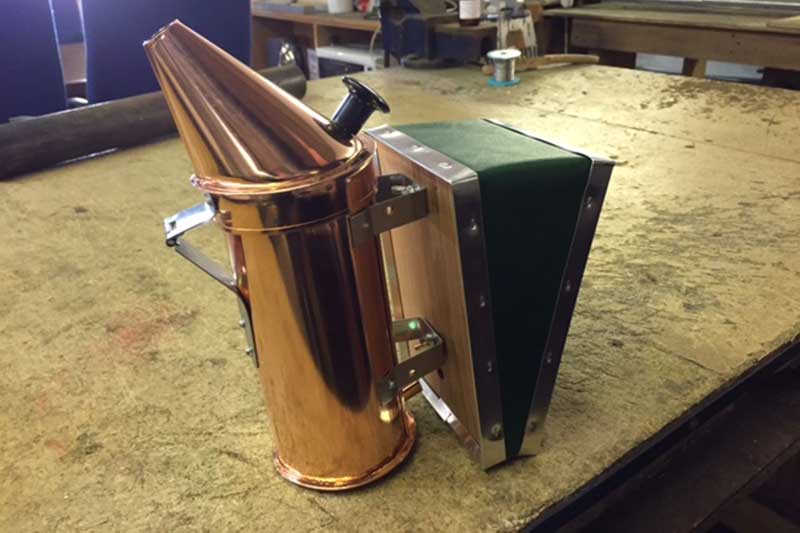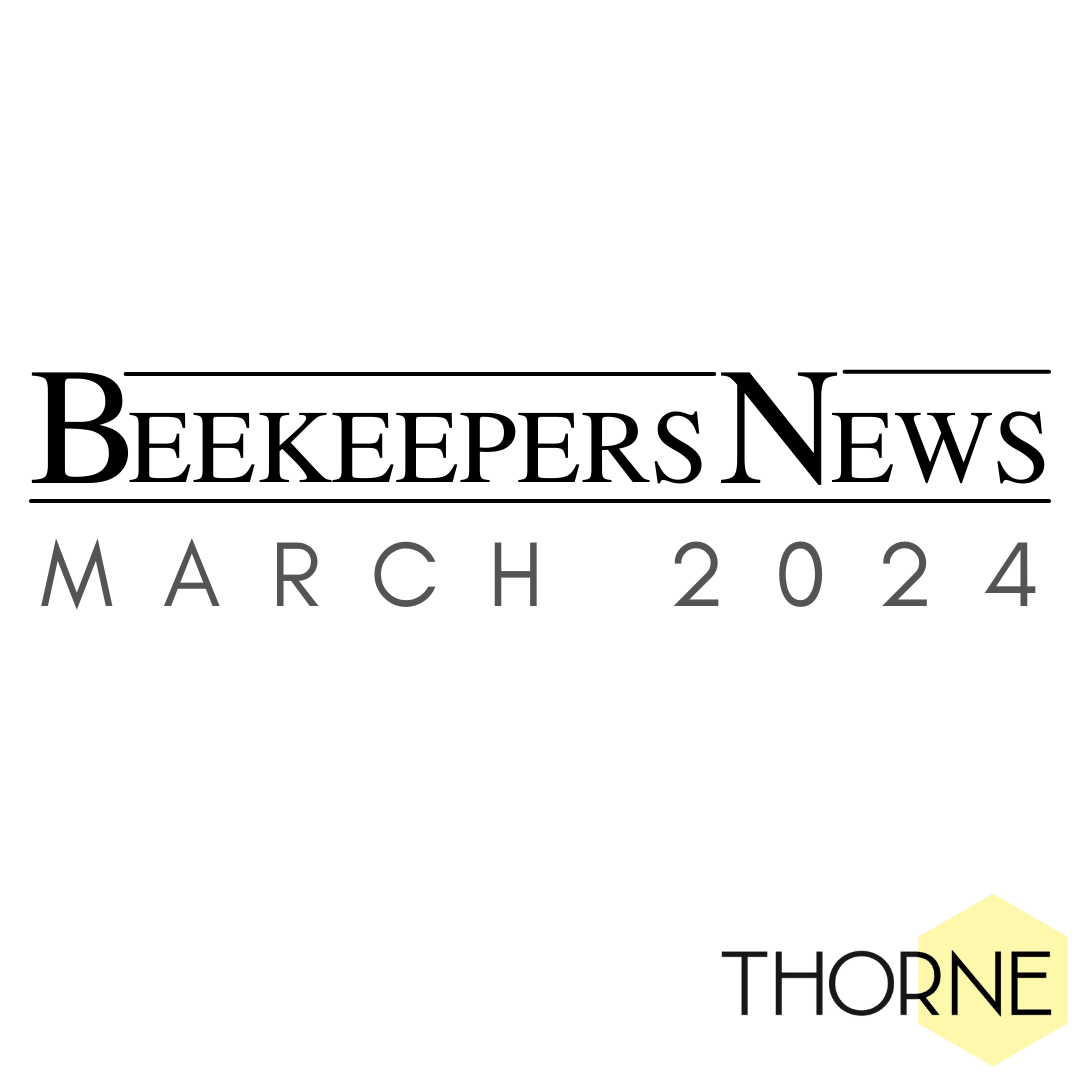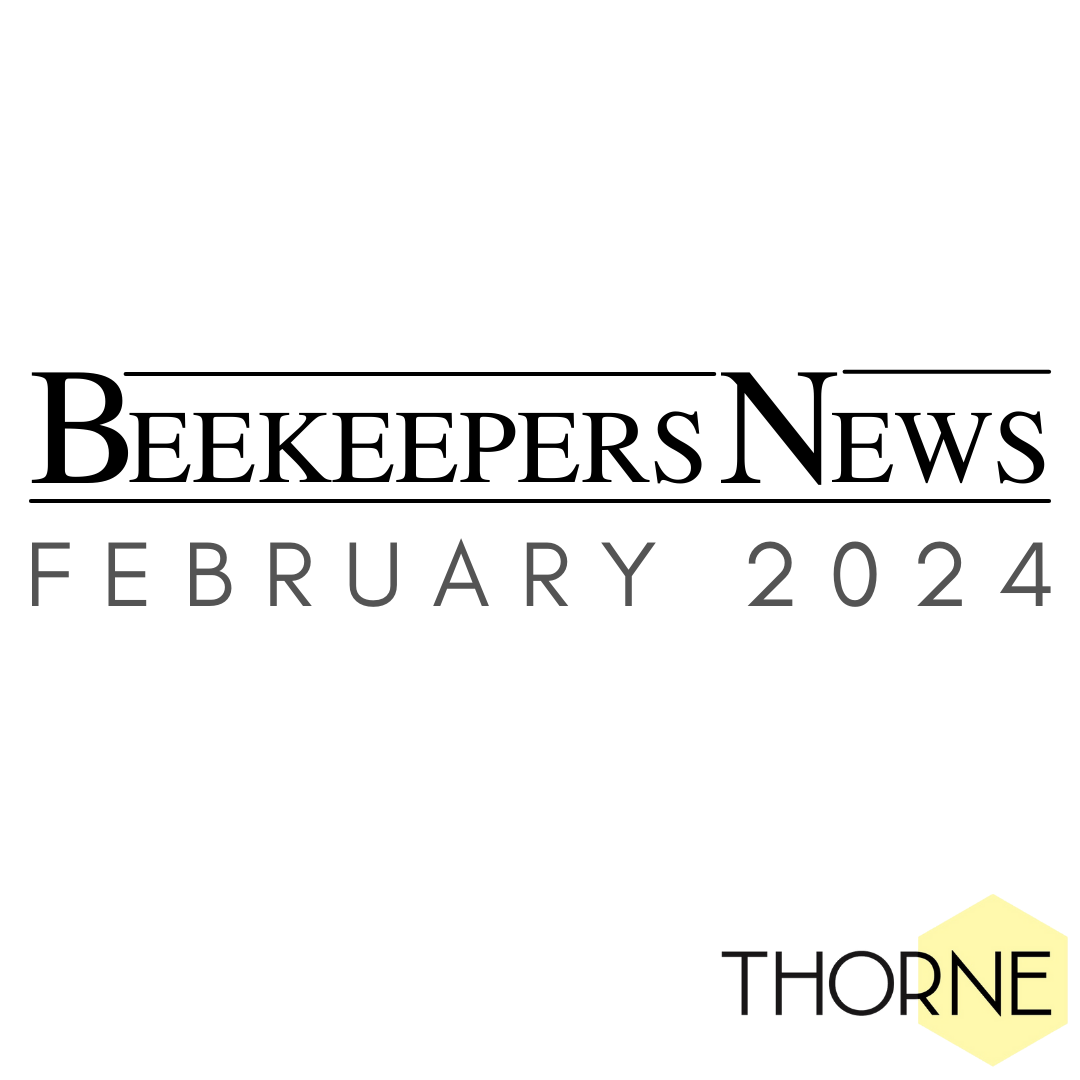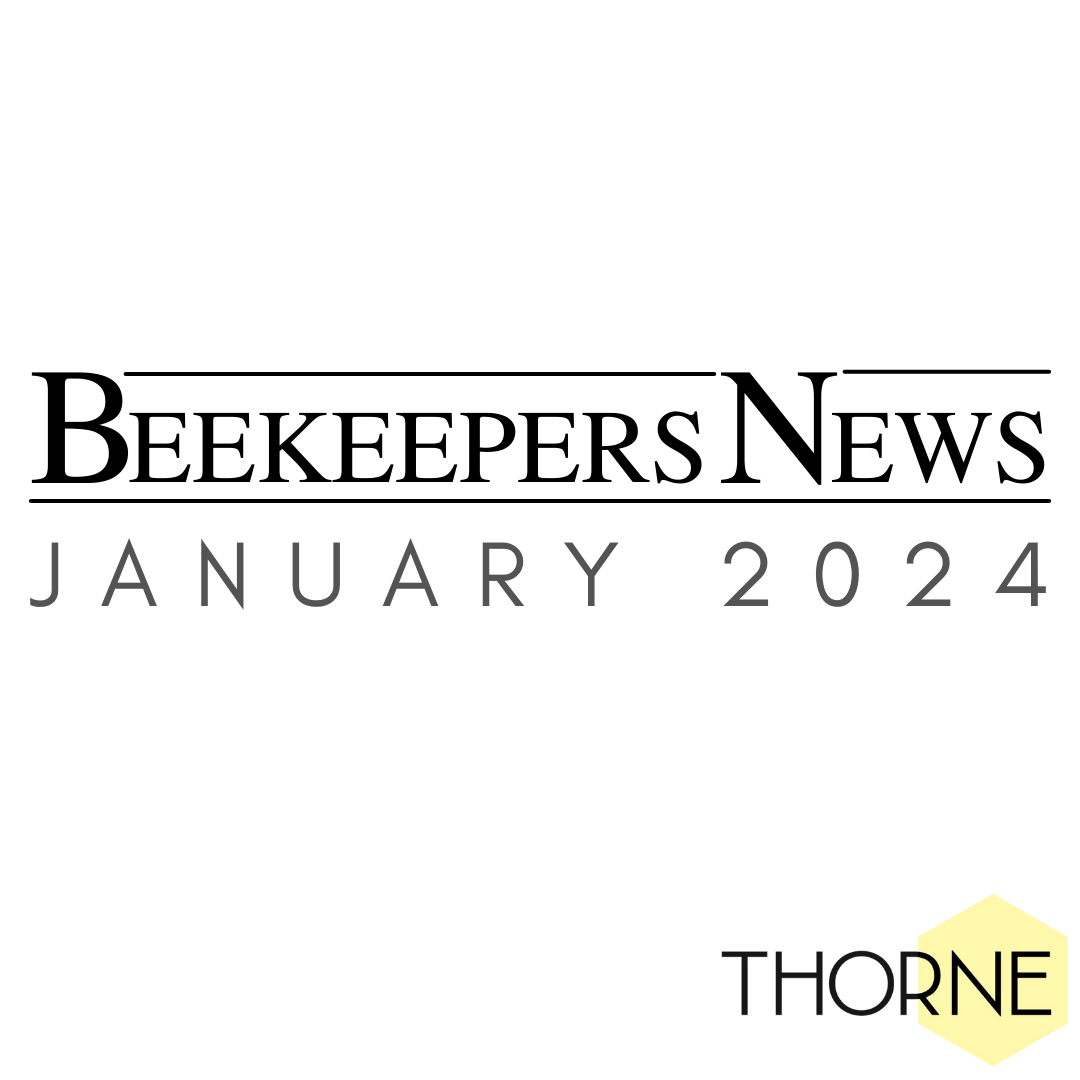November Roundup
After the fun of September and October Sale and Open Days and the National Honey Show, November is a time to take stock, regroup and plan the winter sale and beekeeping year ahead at Thornes.
We had a successful candle mould and equipment sale midway through the month and of course the Black Friday weekend sale kept us all busy.
November also saw us filmed by a camera crew. They had been commissioned to make an eBay film about us – a link will be going live in the not too distant future – if we haven’t ended up on the cutting room floor that is!!
Equipment Focus………
I read recently on a forum somewhere that smokers are no longer manufactured in the UK - WRONG! I thought I would use this edition of the Beekeepers News to explain how we make our smokers, right here in our factory at Rand in Lincolnshire.
Our Empire range of smokers are available in either copper, stainless steel or galvanised metal, standard or large, with or without a cage. So we have quite a variety available. (We also stock an electric smoker and of course the very popular Dadant smoker from America).
Copper is the most difficult metal to work with. Being soft and extremely pliable, any marks or dents are obvious, so our engineers have to be extremely skilled and careful during the whole manufacturing process.
The first step is to cut all the parts out by using a 40 tonnes power press. This includes the nozzle, rim, body, bottom, air pipe and hinge. The lids are made first and the knob attached.
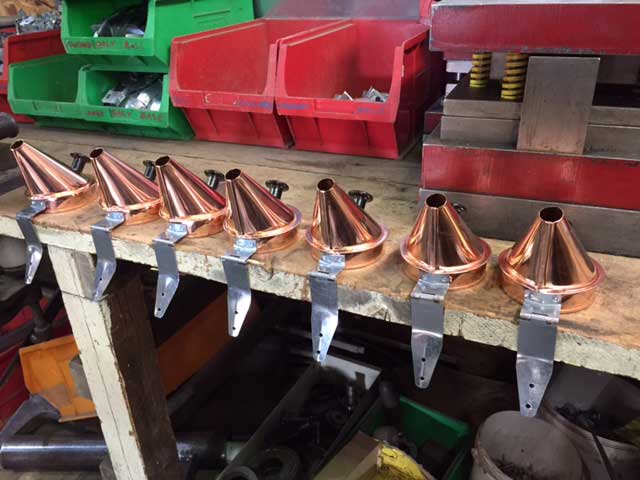
Next step is to make the smoker body, ensuring it fits with the corresponding lid. The edges are bent slightly before they are hammered down to make the edge. The body is then manually shaped into a cylinder, before the edge is hammered to make a smoke and air tight seam.
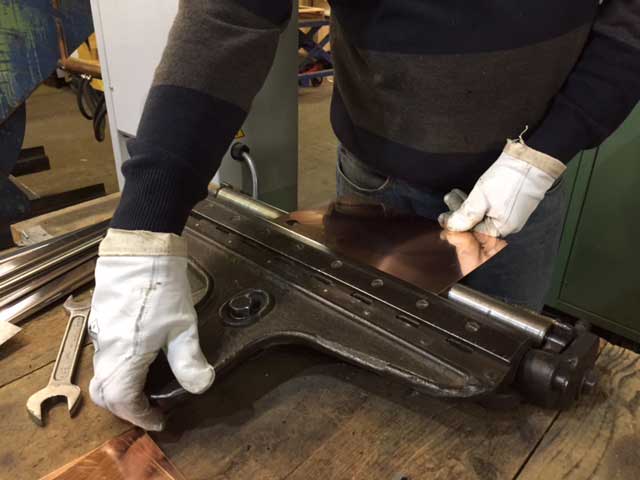
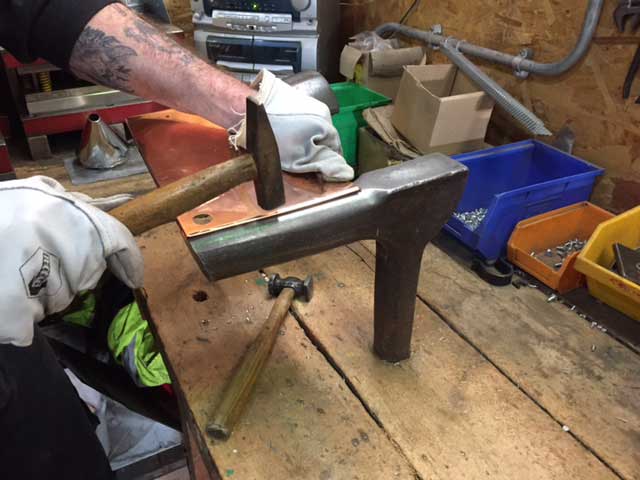
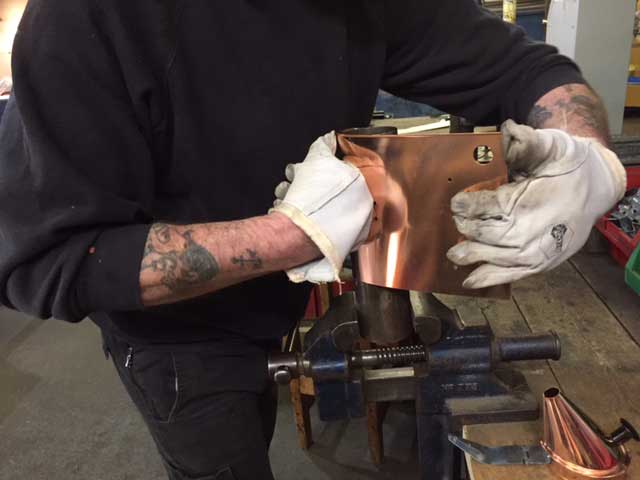
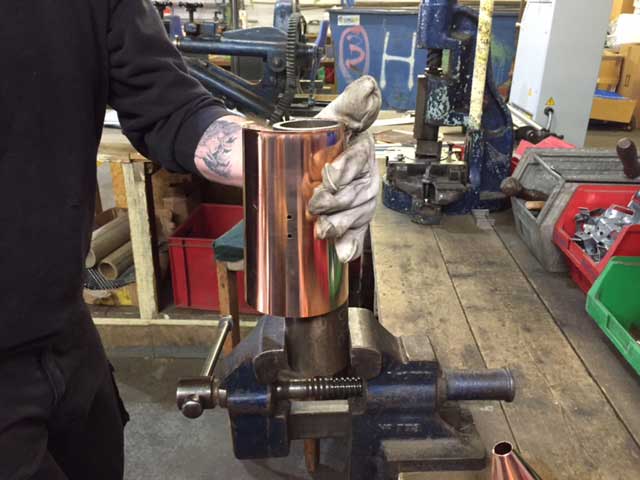
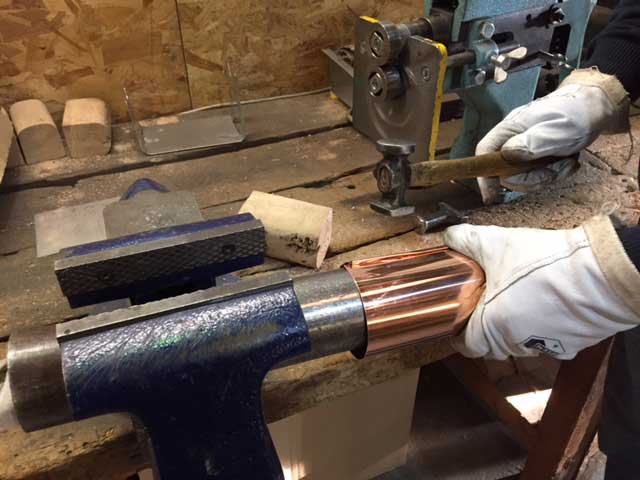
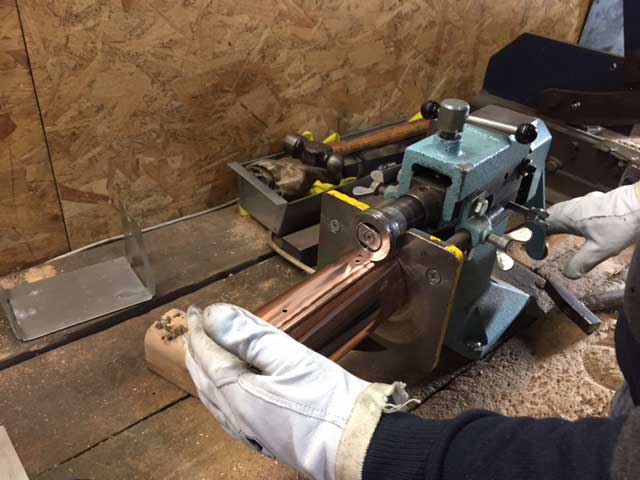
A swager tool is used to make the edge at the top – to stop the lid slipping off. Next it’s the bottom of the smoker. First the edges are trimmed and then the outside is crimped. It is then carefully pushed into position, hammered into place and sealed.
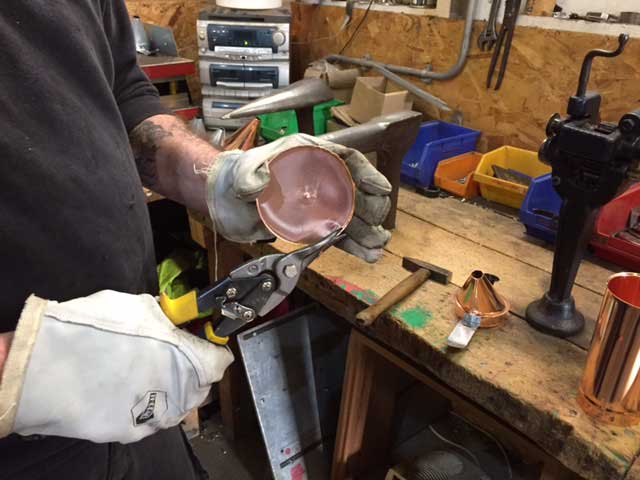
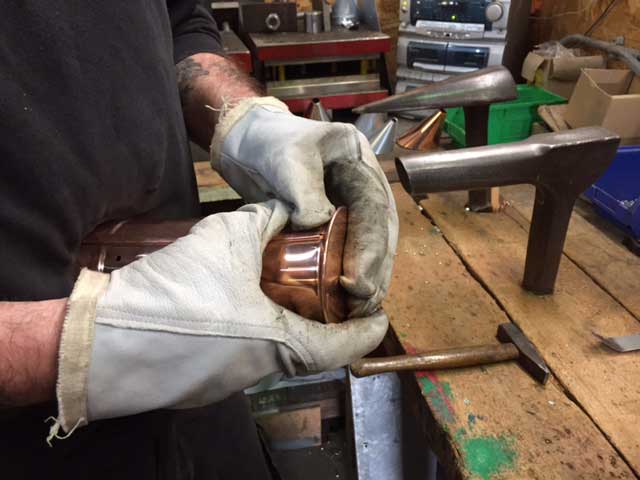
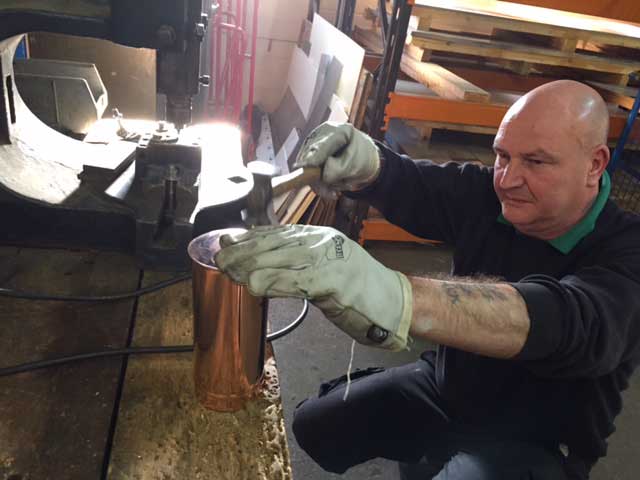
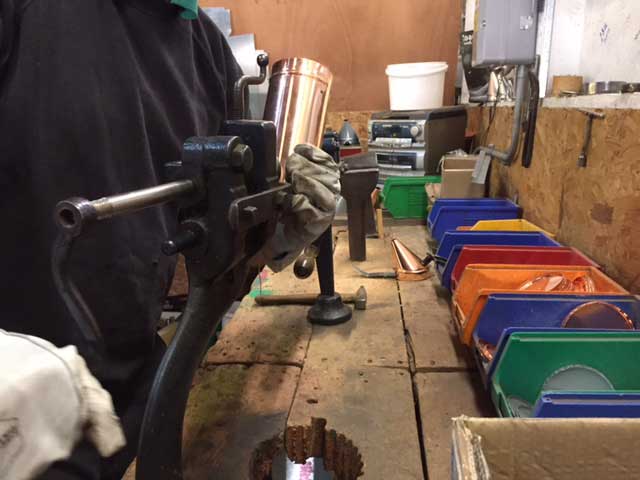
Next we attach the lid and bellow brackets using rivets.
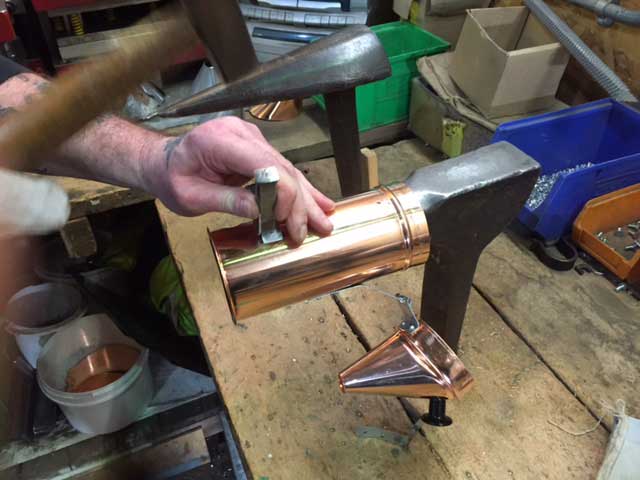
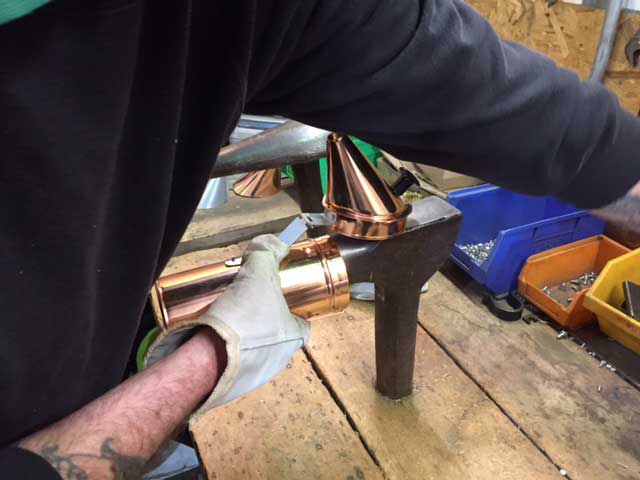
Finally the bellows are attached and there you have it – one standard copper smoker, ready for sale at £45.28. Mark and Alex can make approximately 15 to 20 smokers per day. So I can very much say that smoker manufacturing is alive in the UK.
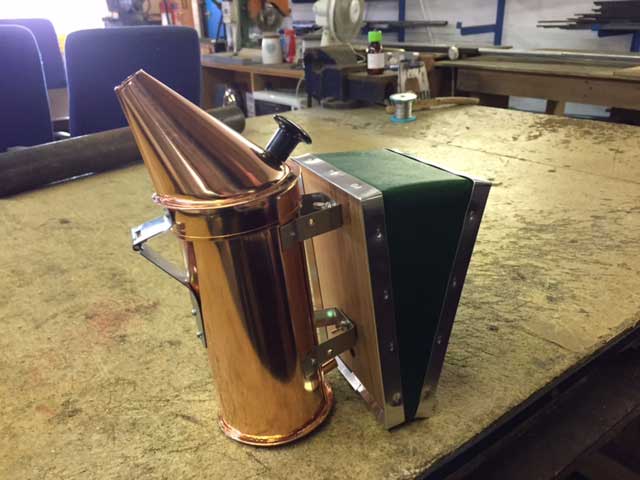
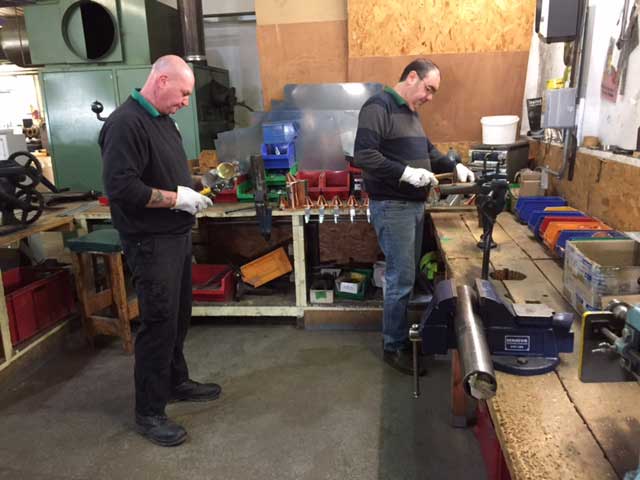
Ask our Expert
Please email us at sales@thorne.co.uk if you have a question for our experts.
To insulate or not – this is one expert beekeepers view who lives in the south of the country.
As the season swings around and we head into winter, it’s time to get out the winter coat and scarf… that is because you are a mammal, warm blooded, and need to wrap up against the chill.
Your bees have other needs – They have spent the last twelve million years (since the last ice age) acclimatising to the maritime British climate. They are cold blooded, and their needs are different to ours. Cold never killed a bee colony. There have been colonies that have survived continental flights, five miles up and minus fifty to sixty degrees Celsius in the tail section of a plane. It is the damp that does for them in this country NOT the cold.
Your bees need plenty of stores, and will do best on their own forage… so don’t be too greedy!
You need to encourage your bees to cluster… by keeping them as cold (and dry) as possible… if you pamper them and keep them warm, they will move around wasting energy, they will consume their stores more rapidly and be more prone to starvation. If it is warm in the hive they may attempt to forage and are unlikely to make it back to the colony, depleting cluster numbers; So quilts off, entrance block out, mouse guard on, allowing plenty of ventilation. You can even place matches at the corners of the crown board to increase through ventilation. I tend to leave the corex inspection sheet in, this helps to reduce damp from below, and it also allows monitoring of the clusters movement from the pattern of the debris on the board without disturbing the bees. You will see a changing pattern of the wax cappings on the floor as the bees move to fresh areas of stores. Clean it off once a week to keep an eye on cluster position and movement; it will also give you an idea as to the rate of consumption of stores.
When spring finally arrives, in March-April time, put the quilts on. At this time of year the day to night temperature is at its most extreme. The bees are expanding the nest and foraging during the warmth of the day. When we have a very cold night it sends the bees back into cluster; they can’t cover all the brood and we get chilled brood (the periphery of the expanding nest is killed by the cold). This will stress the expanding colony and may introduce brood diseases. A quilt will help to insulate them and keep in the heat they have generated during the day for brooding. It also allows the young bees (the wax workers) to start generating wax and expanding and repairing the nest (this is a very energetic process – the bees can get up to as much as forty two degrees Celsius in cluster to sweat out the wax).
The quilts can stay on all summer, “what keeps in the heat, keeps out the heat”. Just remember to remove them when it starts to get nippy in autumn.
If you want to do some extra wrapping you could wrap your (single walled) hives, WBC hives don’t need this. Try to keep the plastic outer away from the wood, by using a standoff on the corners. Black plastic is a good colour as it will absorb early spring sunshine, warming the colony and allowing the bees to relocate to fresh stores (I use builders’ damp course membrane). These covers double as a Woodpecker guard, as the woodpecker can’t gain purchase on the wood, or get under the plastic.
Well that’s all my Christmas Wrapping done... have a good one!
Bees for Development
Bees for Development have a busy run up to Christmas. Please take the time to read a message from them below.
1. The Big Give Christmas Challenge begins on Tuesday 29th November. We are raising funds to help young people in Ethiopia to earn their livings from beekeeping. The Challenge runs from midday Tuesday 29 November #GivingTuesday for 72 hours to midday Friday 2 December. Your donation will be doubled as long as match funds last, so please donate to our Project after 12 noon Tuesday.
2. Bill Turnbull will feature our work on his BBC Radio 4 Appeal Sunday 11 December at 7.55am and 9.26pm, and Thursday 15 December at 3.27pm: read here for details.
3. For family and friends that 'already have everything', why not give them one of our new Good Bee Gift cards? Prices of these virtual gifts range from £10 to £100: make your choice here.
Upcoming Events
Bees for Development -the Big Give. 29th November to 2nd December.
Bees for Development – Bill Turnbull features their work on his Radio 4 Appeal on Sunday 11 December at 7.55am and Thursday 15 December at 3.27pm.
Thornes Winter Sale. Online from 6am on Saturday 31st December. Phone orders from 9am on Tuesday 3rd December. The sale will run until the end of January. We get many hundreds of orders over this period so please be patient as we pack up and send out your parcels!
Please see our website for Christmas opening hours. Finally, from all at Thornes, we wish you all a very Merry Christmas and a Happy and Prosperous New Year.


